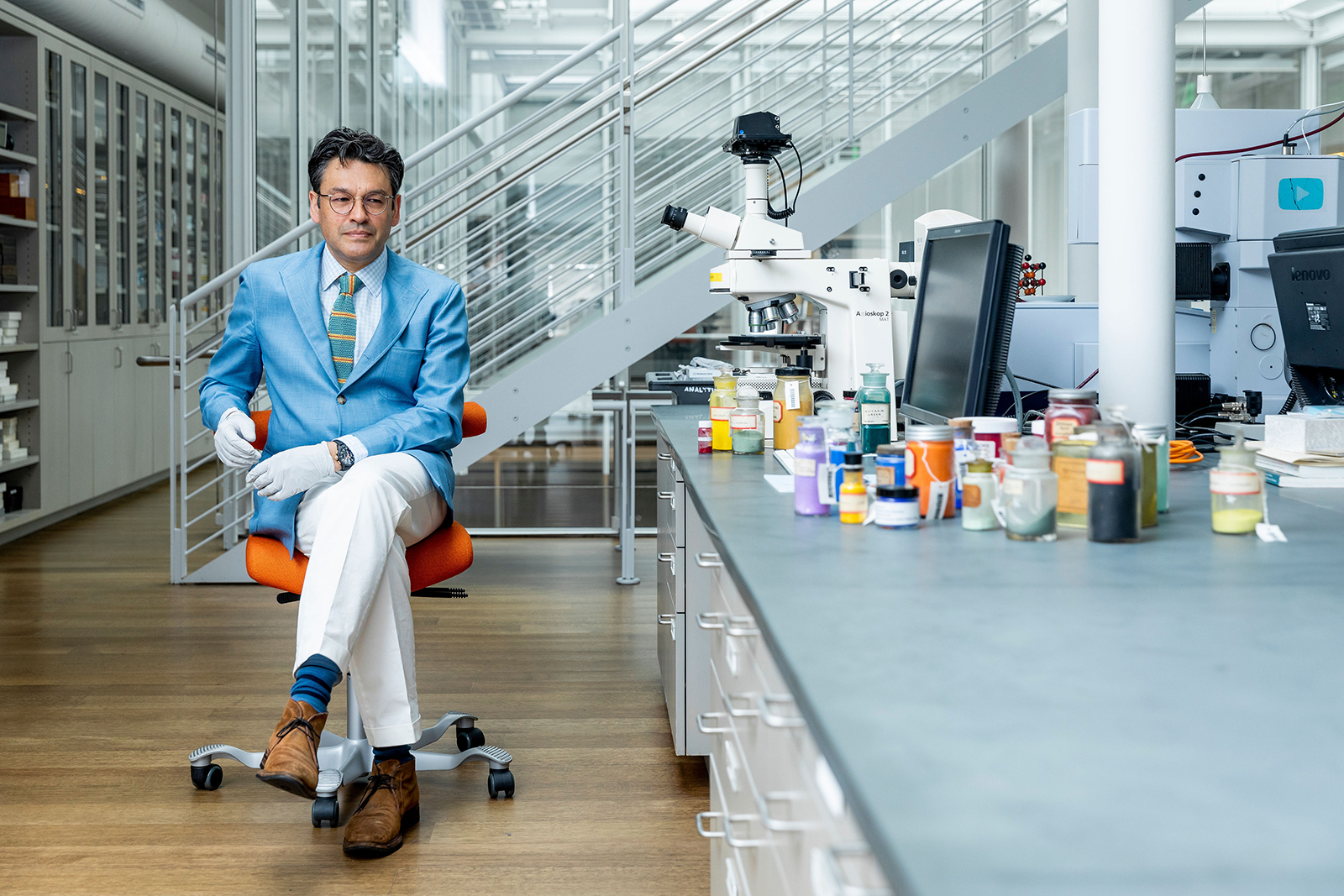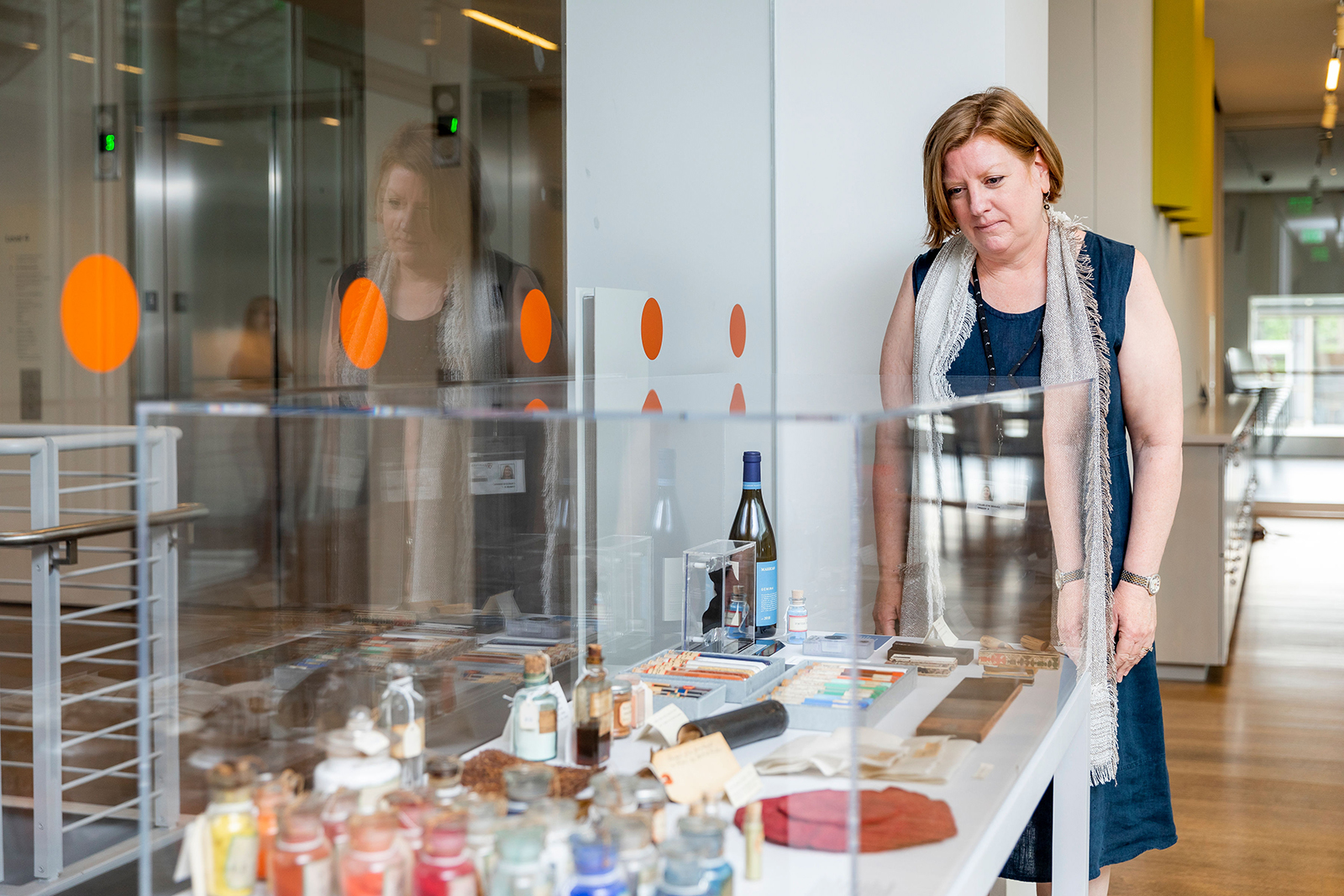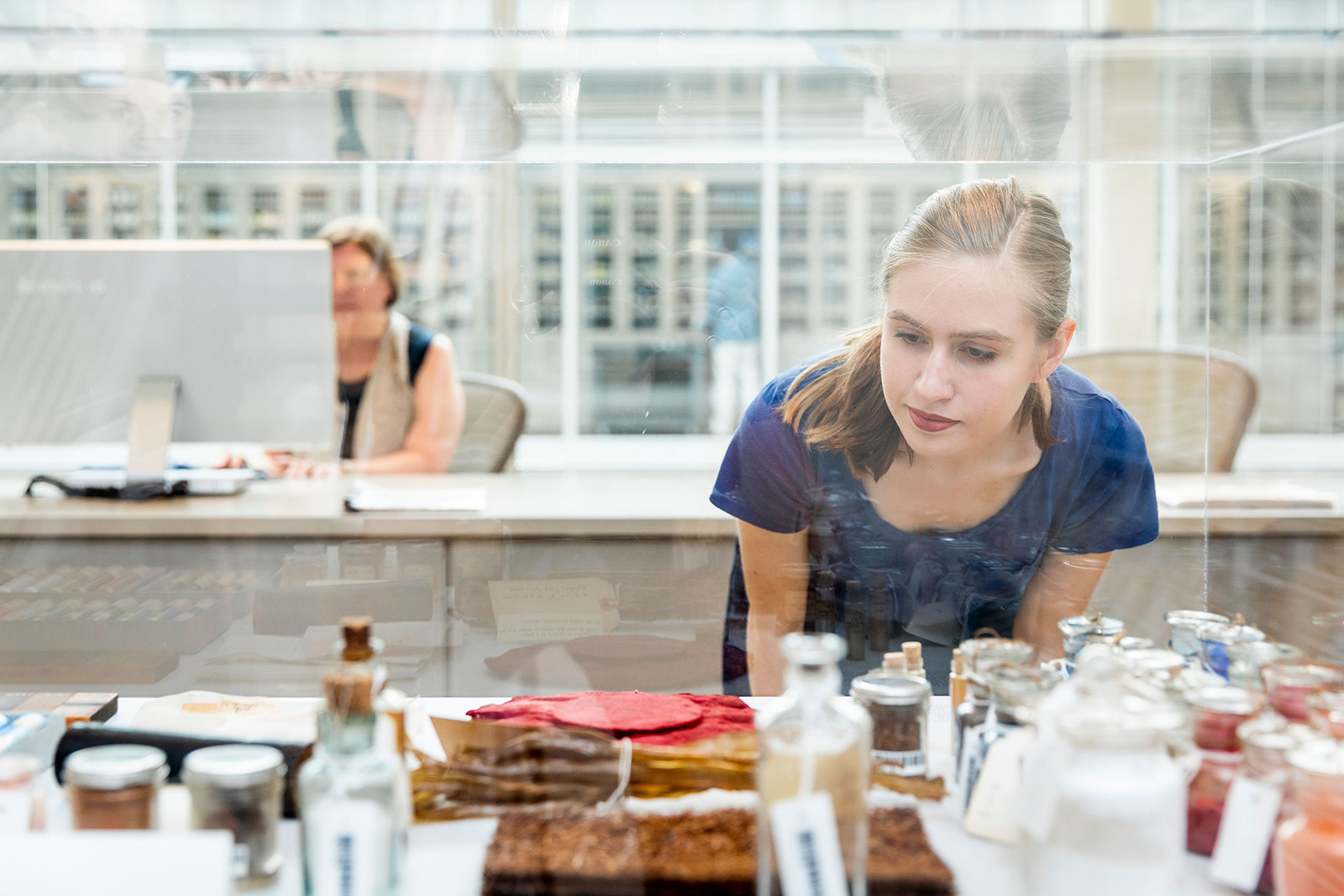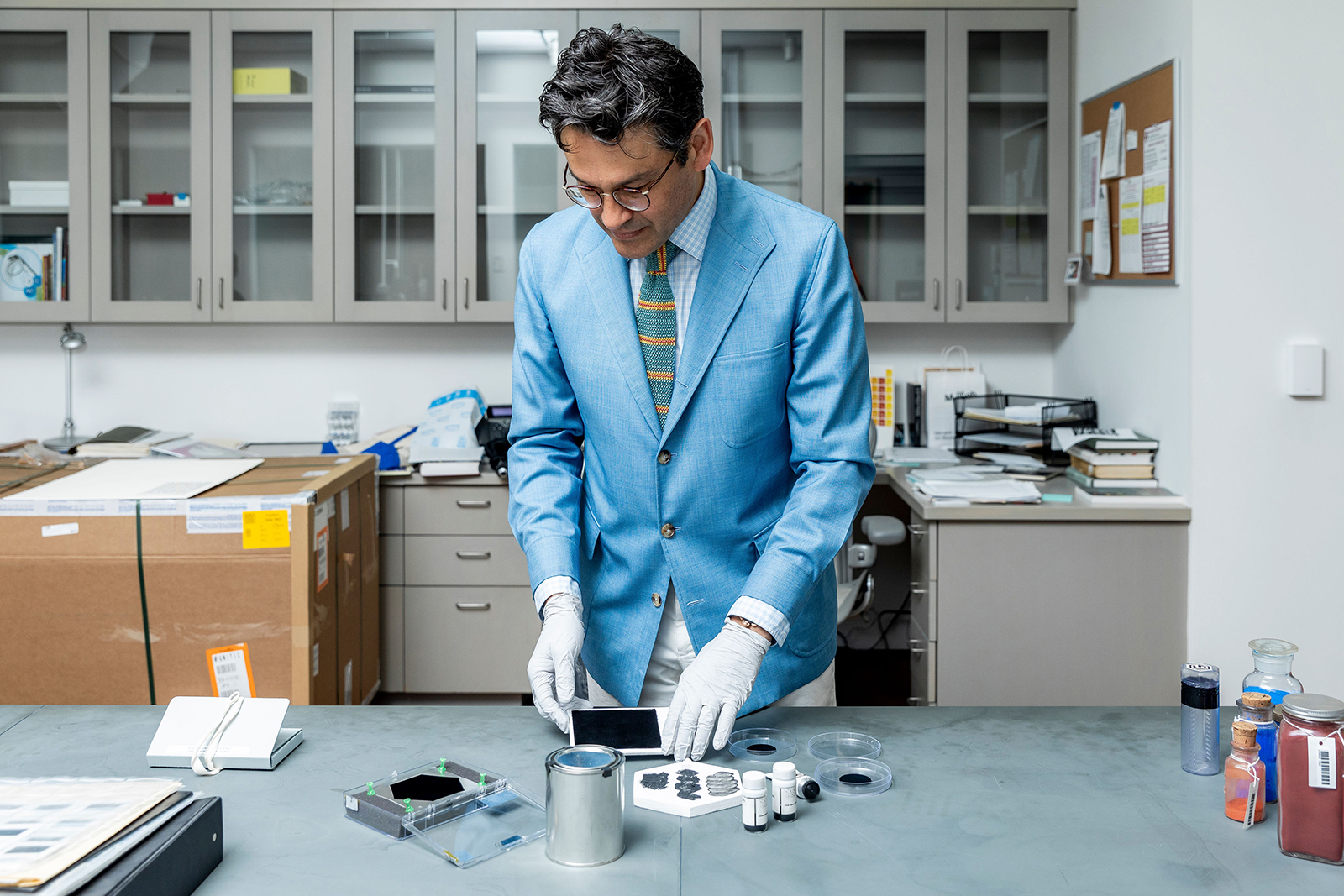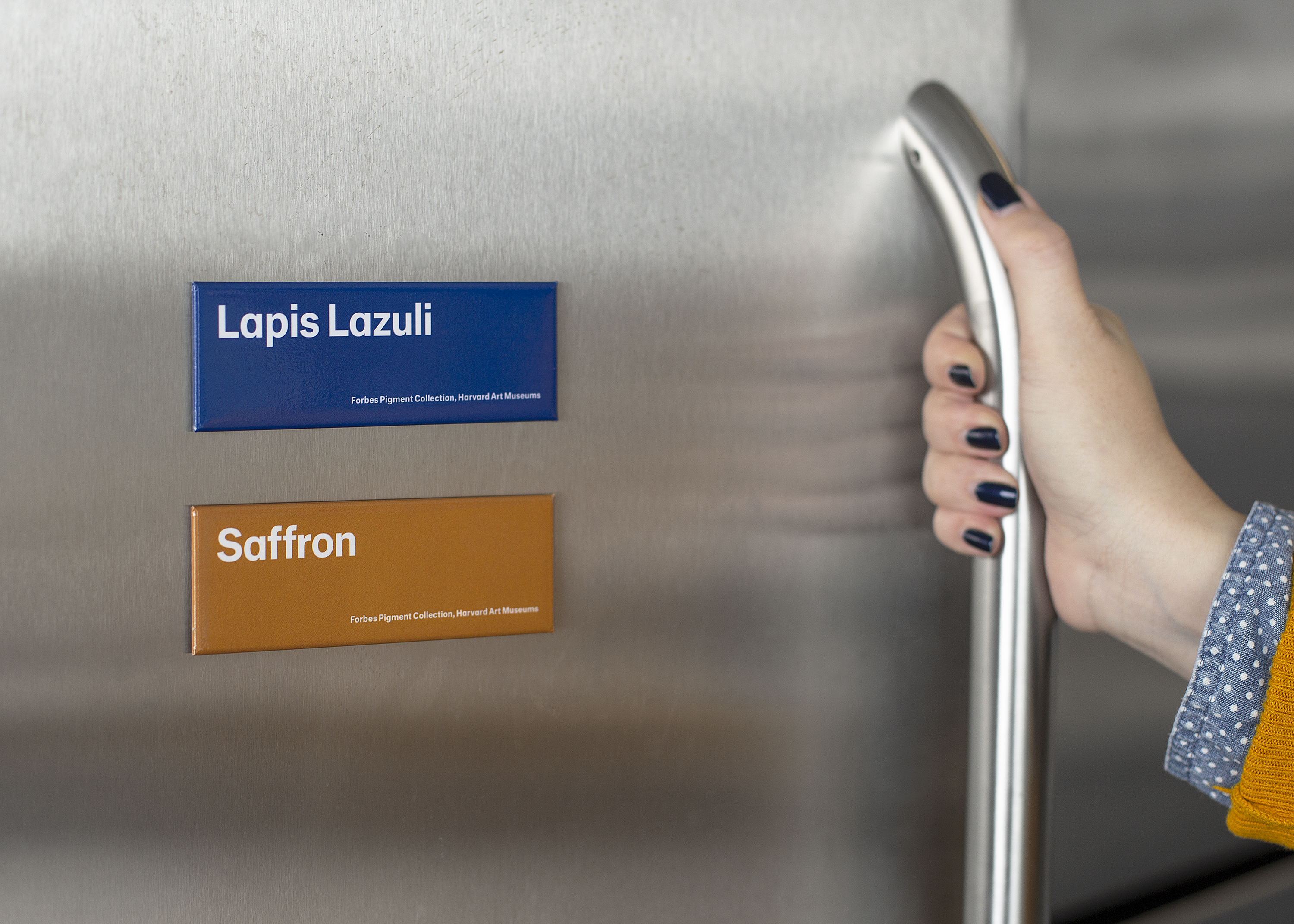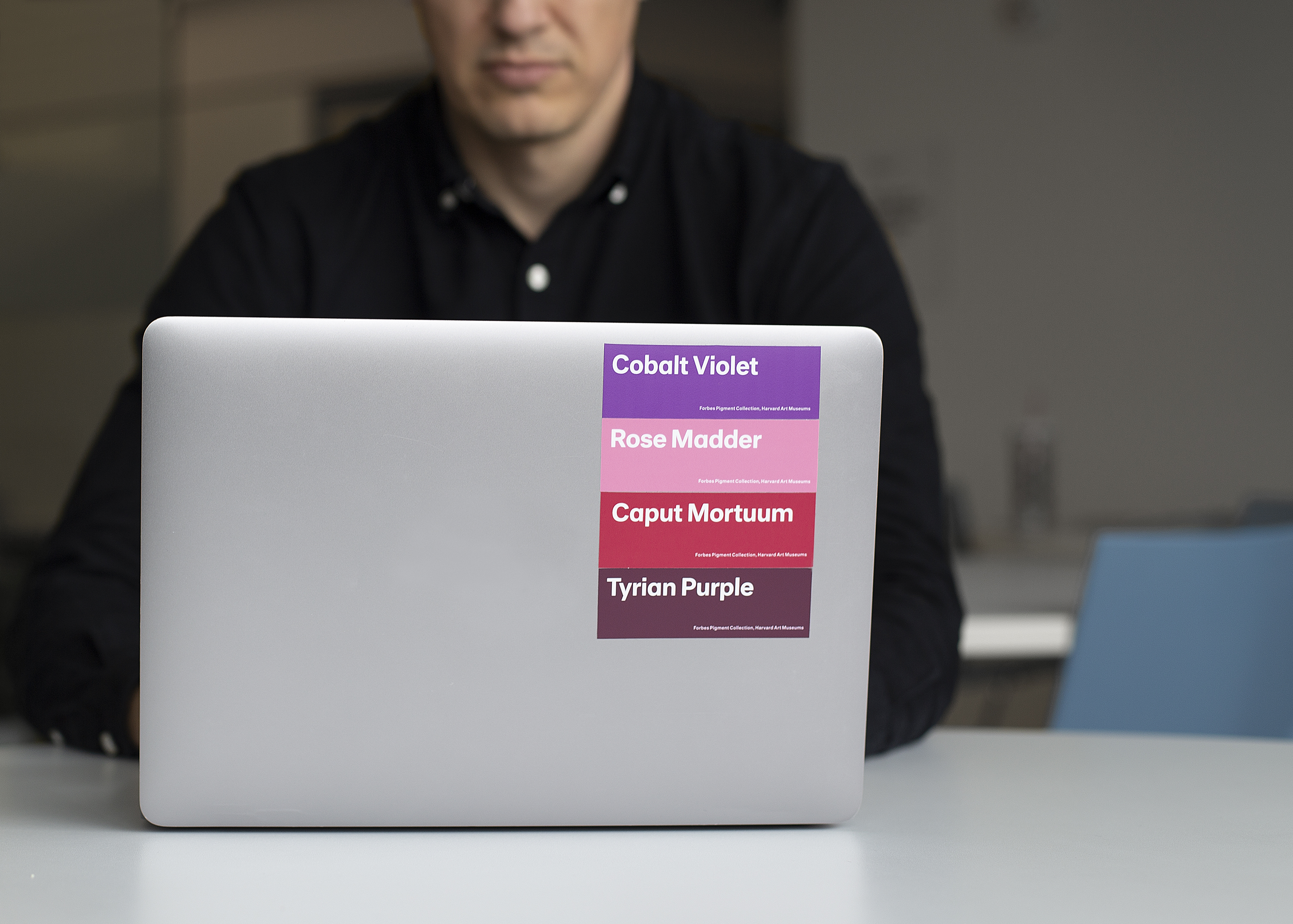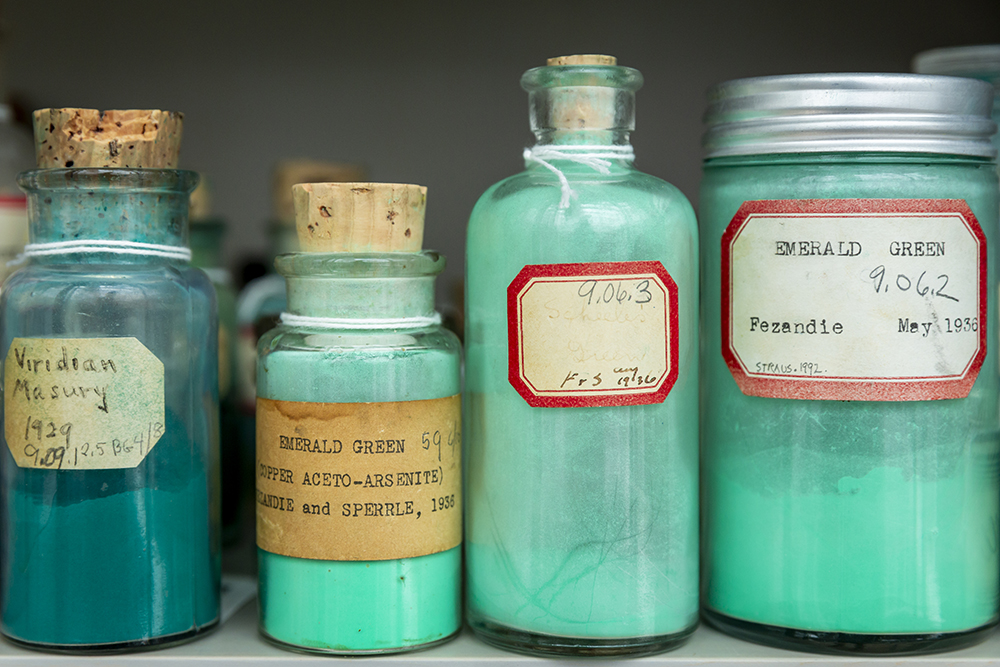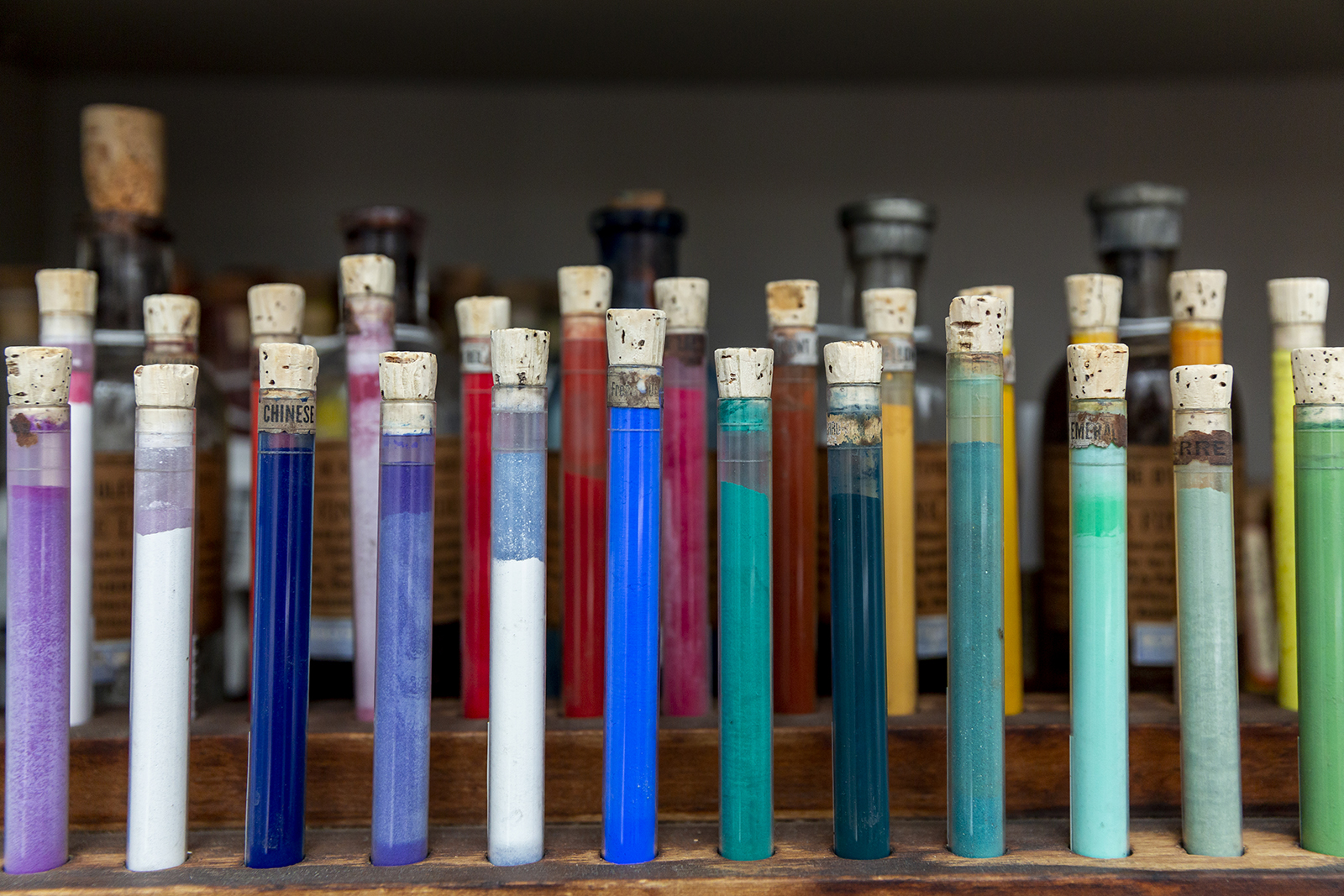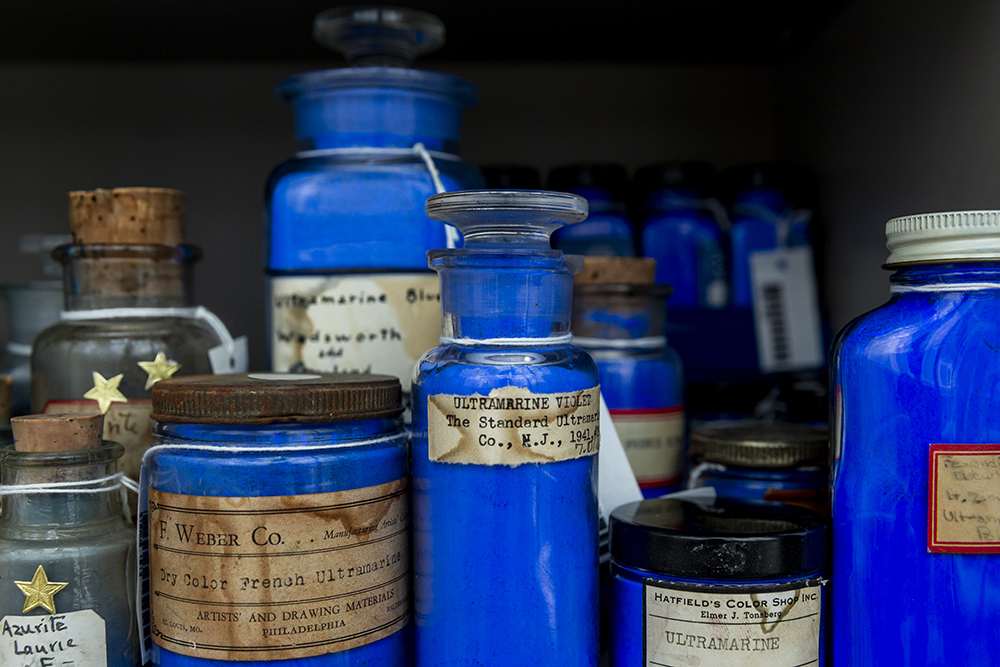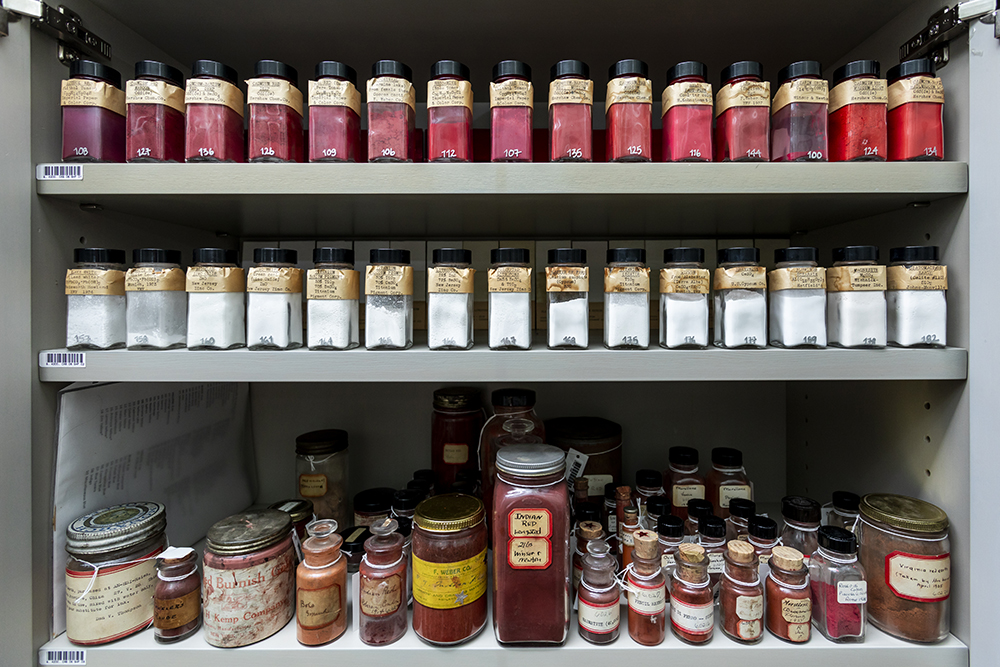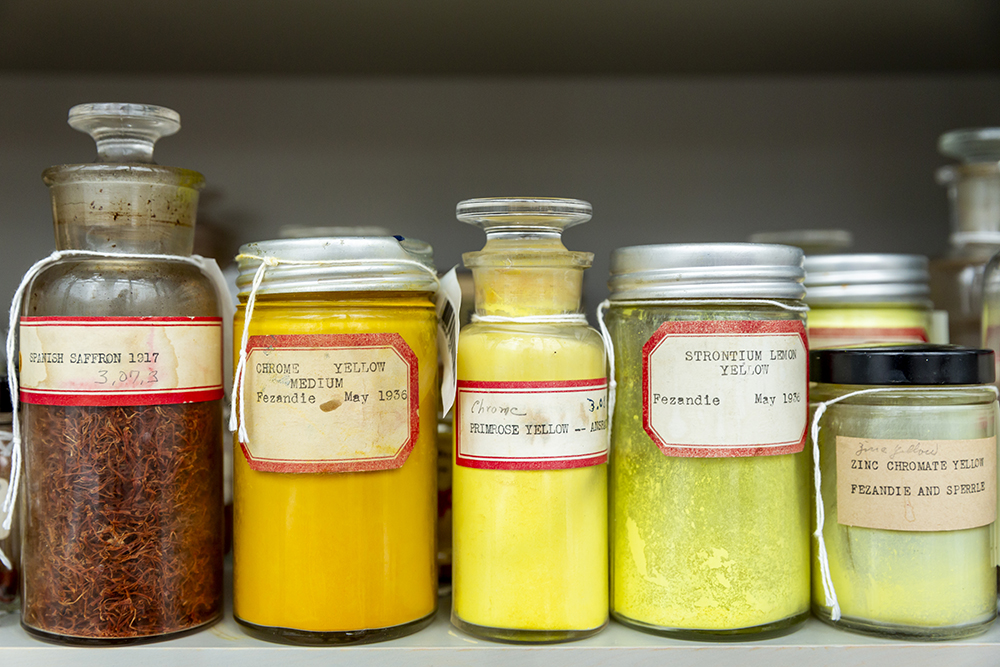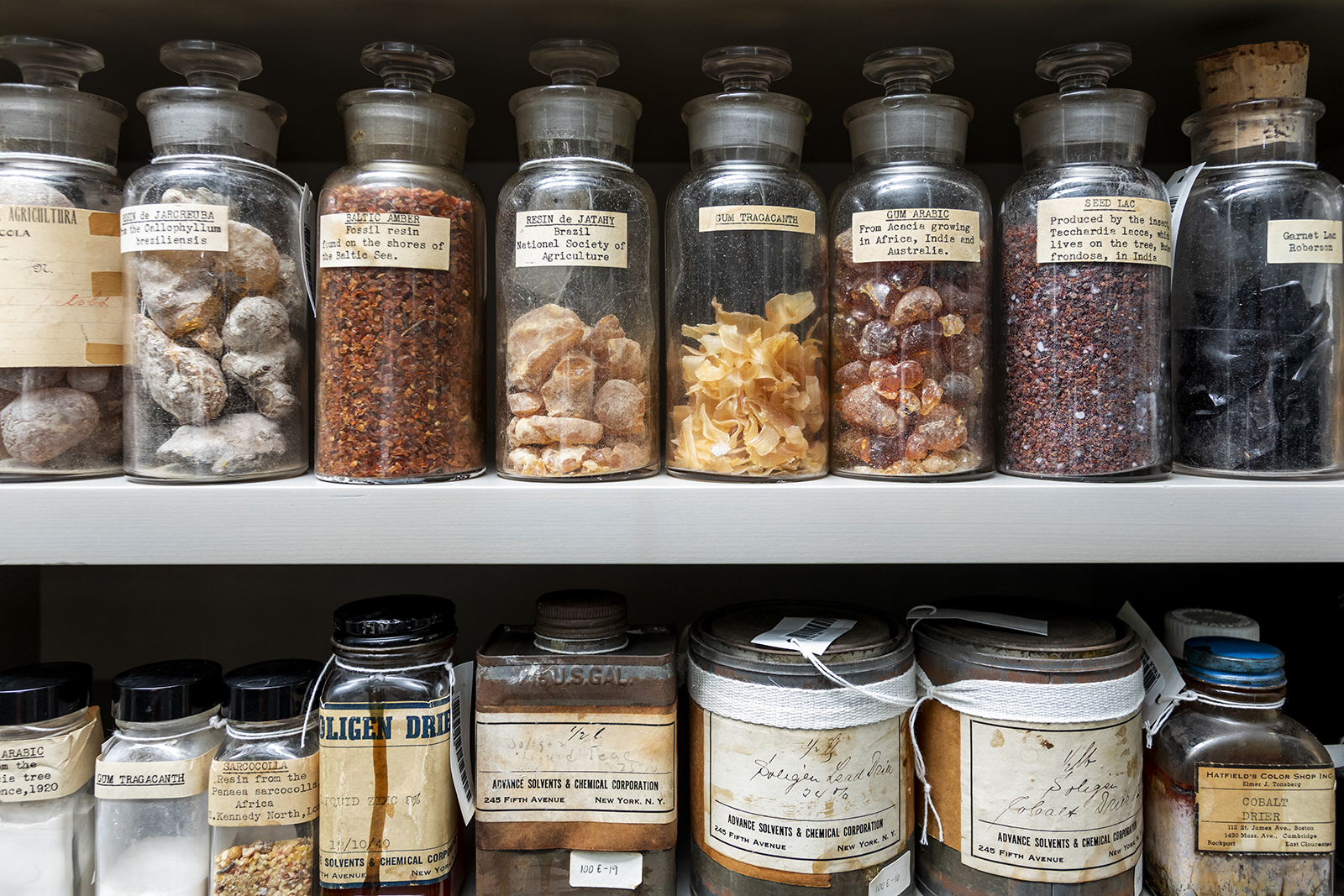“Can I see the pigments?”
That’s the first question many visitors ask when they arrive on Level 4 and gaze across the Calderwood Courtyard to the world-famous Forbes Pigment Collection.
Of course you can see the pigments. They’re always on view—just at a distance.
The Forbes Pigment Collection—an assemblage of more than 2,700 pigments (and counting!)—is in active use by conservation scientists at the museums, who rely on the samples for testing and as reference materials in the analytical laboratory. For that reason, most of the collection can be glimpsed only from outside the glass-walled Straus Center for Conservation and Technical Studies. Former Fogg Museum director Edward Forbes started the collection at the turn of the 20th century, and it has been used by Straus conservators ever since. Alongside the pigments display is the corresponding Gettens Collection of Binding Media and Varnishes (named after the museums’ first staff scientist, Rutherford John Gettens), which contains about 1,600 additional samples and objects.
Over the past five years, the pigment collection has received plenty of attention, not only by visitors but also by the media, such as The New Yorker, Atlas Obscura, Fast Company, and Tom Scott’s YouTube channel.


